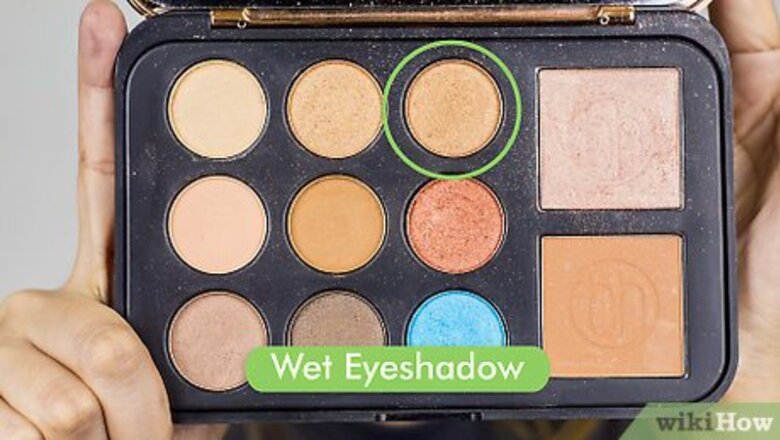
views
Using Eyeshadow and Water

Pick the right product. This method involves using water to dampen eyeshadow, and then applying it. Most eyeshadows become hard and unusable when they get wet. Fortunately, there are some eyeshadows that are designed for this "wet" type of application. Most of these types of eyeshadows will say on the package that they can be applied wet. Here is what you should keep in mind when choosing eyeshadow: "Wet-to-dry" eyeshadows are the best for this sort of application. "Baked" eyeshadows and loose pigment powders are also suitable. Regular eyeshadows are not recommended, because they will get hard and unusable if they get wet. If you must use regular eyeshadow, go for the metallic ones. Keep in mind that the eyeshadow will look powdery when it dries. If you want something that always looks wet, click here. EXPERT TIP Daniel Vann Daniel Vann Licensed Aesthetician Daniel Vann is the Creative Director for Daredevil Cosmetics, a makeup studio in the Seattle Area. He has been working in the cosmetics industry for over 15 years and is currently a licensed aesthetician and makeup educator. Daniel Vann Daniel Vann Licensed Aesthetician Wet your brush before applying bright colors. Daniel Vann, Creative Director for Daredevil Cosmetics, says: "Bright colors do not appear on or hold to dry skin — they die. You have to prep your skin correctly. Your skin should be dewy so that when you press the shadow on, you see its full potential come out."
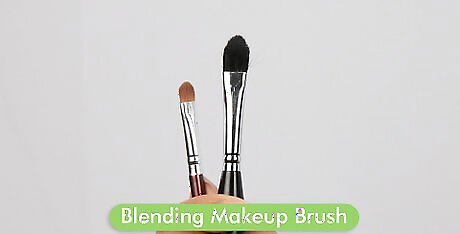
Choose a blending makeup brush. Make sure that the brush is dense and thick. If you don't like to use brushes, you can use a foam-tipped eyeshadow applicator instead. Make sure that the brush or applicator are clean.
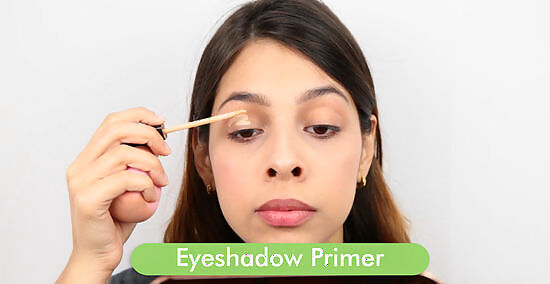
Consider applying a base on your eyelids. This base can be an eyeshadow primer, cream eyeshadow, or pressed eyeshadow. Applying wet eyeshadow will work on just about anything. Use eyeshadow primer to help the wet eyeshadow go on smoothly. Use cream eyeshadow if you want a brighter color. Use pressed eyeshadow if you want to get a softer blending.
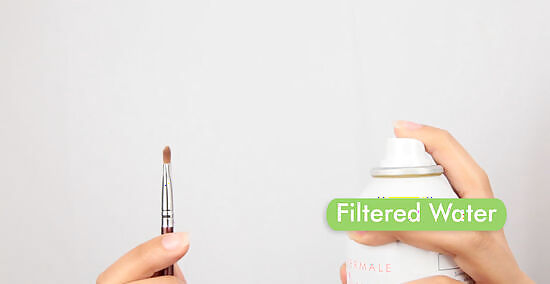
Lightly mist the brush. You can use distilled or filtered water, makeup setting spray, or a makeup mixing medium. Avoid using tap water, as it tends to contain harmful bacteria. Also, do not dip the brush into the water, and don't get the eyeshadow itself wet. You want the brush to be damp, not soaking wet. If the brush is too wet, dab it lightly on a clean towel. If you are using a foam-tipped applicator, lightly mist just one side. Press the wet side against the back of your hand. This will help saturate the brush.
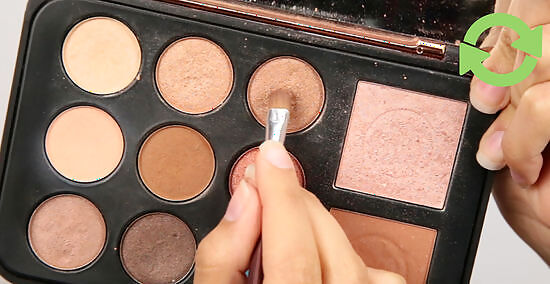
Rub your brush a few times on the eyeshadow palette. Keep your brush moving back and forth in one direction. Don't press too hard. Try to use the damp brush on only one side of the eyeshadow pan. This way, the other side will always stay dry. Even wet-to-dry eyeshadows can harden with too much moisture. If you are using a loose pigment powder, shake a small amount into a dish or the cap first. This way, you won't pick up too much and end up with a clumpy mess. If you are using a foam-tipped applicator and loose pigment, press the pigmented side against the back of your hand. This presses the pigment into the foam. It will help keep the foam from shedding loose pigment over your face.

Pat the eyeshadow on. Apply it all the way from the lash line to the crease. If you plan on using other colors, such as in the crease and on the brow bone, you will need to let this first color dry.
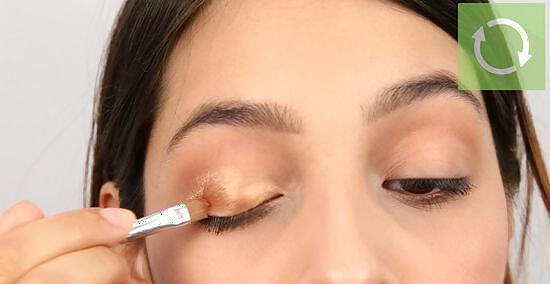
Consider applying a second layer after the first one dries. If you want, you can even use a different color, such as in the crease. For an even brighter look, you can dust some dry eyeshadow onto the wet one.
Using Eyeshadow and Gloss
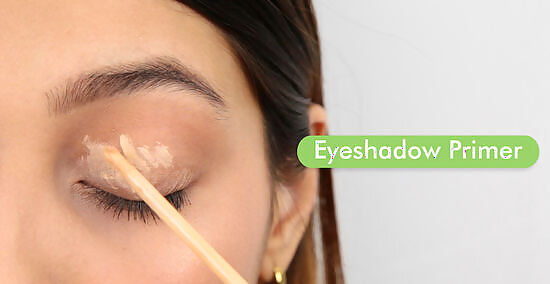
Consider priming your eyelids, from lash line to brow, using an eyeshadow primer. This method will show you how to get that wet, glossy look using eyeshadow and a gloss. The primer will keep your eyelids from soaking in the gloss, and help the "wet" look last longer. Keep in mind that this wet, glossy look may crease over time. You will need to touch it up when this happens.
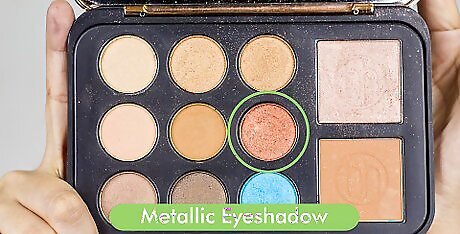
Choose a metallic eyeshadow. You can use any type of eyeshadow you like, including pressed powder, pigment, wet-to-dry, and cream. The finer the shimmer, the more glossy it will look. You can use a matte eyeshadow, but the color may change after you apply the gloss.

Apply the eyeshadow like you normally would. This method tends to work best with simpler eyeshadow styles. Consider applying a base color all cover your lid, from lash line to brow bone, and then a second color from lash line to crease. You will be glossing the second color. To make the color more vibrant, apply a cream shadow first, then a regular, pressed eyeshadow on top.
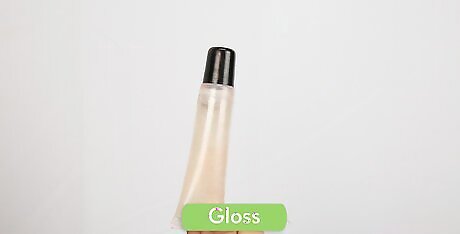
Choose a gloss. This will give your eyeshadow that "wet," glossy look that lasts all day. The best gloss to use is ordinary lip balm, but you can use clear lip gloss if you want something thicker and shinier.

Apply the gloss using a synthetic makeup brush. Avoid using natural hair, such as camel or sable. You can also tap the gloss on using your finger. Avoid getting gloss into the crease. Leave a small gap. No one will notice, and it will prevent your lids from getting sticky. Avoid the inner corners of your eyes. This will keep the gloss from getting into your eyes and irritating them.




















Comments
0 comment